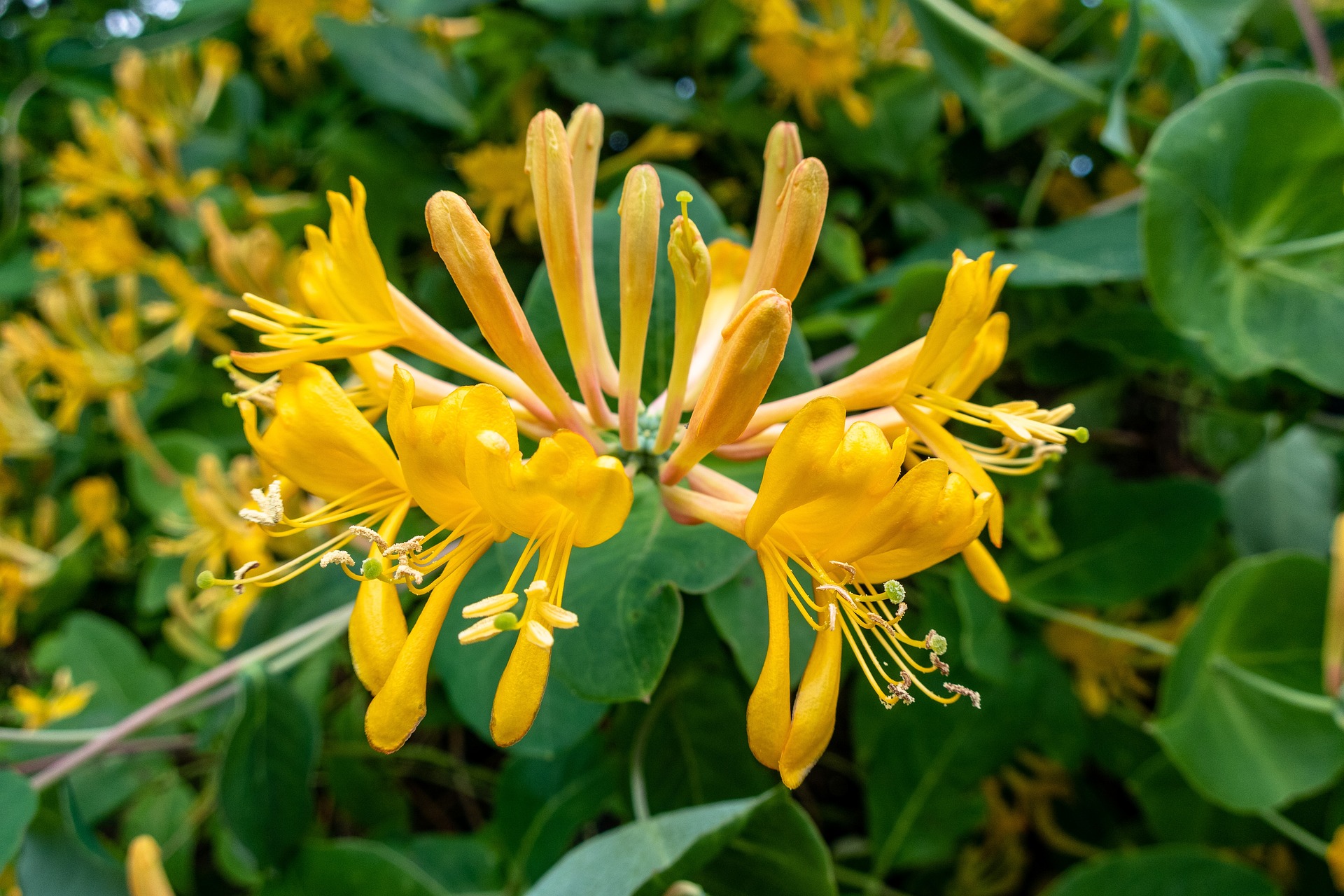
Coral honeysuckle (Lonicera sempervirens)
Also receive the Almanac Daily newsletter including gardening tips, weather, astronomical events, and more.
Planting, Growing, and Pruning Honeysuckles
ADVERTISEMENT
I will soon be planting a coral honeysuckle, zone 4, with ESE exposure. I have heard it can be trained to climb a tree. How should I do this on a tall maple?
Hi Andy, thanks for warning readers about the invasive honeysuckle species.
A question, not a comments. If I put a honeysuckle vine into a pot, how long (approximately) will it take to develops a thicker, bush like trunk? I want a Major Wheeler, but not taking over the neighborhood. Thank you.
I have a honeysuckle vine that I’ve trained up a brick wall. Do I need to prune it back to stimulate flowers? This is it’s second season.
Hi Elaine,
You do want to prune your honeysuckle vine, and not necessarily to stimulate flower growth, but to keep it from becoming a thick, entangled mess, which can limit the flower production because your vine is not able to get the proper sunlight and air flow it needs.
Depending on when your vine flowers, you can prune it immediately after flowering for both shape and to keep it tidy. Thinning stems and branches (and removing dead or diseased portions) will help promote new growth. Most early flowering honeysuckle vine flowers on the previous year’s growth so it is important to prune as soon after flowering as possible to avoid impacting the following year’s flowers.
If your vine eventually gets out of control, you can do a hard prune during the dormant season—just remember that will mean you will not get any flowers in the coming year.
I have mature orange very tall honeysuckle. It is dying. No flowers or leaves. We had bleach put in our well water for watering the yard. Watered every night. Could this kill honeysuckle?
Hi Suzann,
Sorry to hear about your honeysuckle. Bleach can be very harmful to plants and could very well be the reason that your honeysuckle is suffering.
There are also other factors that can lead to a honeysuckle’s decline. You mentioned that you watered every night, but well established honeysuckle plants actually prefer to dry out between waterings and do not like very damp conditions. Too much water will create issues for your plant. Over-fertilizing can also prevent a honeysuckle from setting flowers.
I live in Toronto, Ontario & am fortunate to have had success at growing a Japonica honeysuckle vine for the past 3 years in a container on my condo balcony, west facing, direct sun from 1:00 to 7:00 pm. It started off very healthy this spring, leaves appearing daily, but more recently, the leaves shaded by the newer growth underneath, are turning yellow, then drying to brown & falling off. Bc of facing west, and the fact leaves are brown & drying, I water daily. But am I watering too much?? How do I know?? Your advice is appreciated.
I have a honey suckle, can I take a branch off (put in water until I get roots) to plant another one? Would the branch be one with the flowers?
Yes! Honeysuckle is one of the easiest bushes to propagate through cuttings. Wait until early spring flowers has tapered off. Then—or anytime thereafter until, say, midsummer—the plant will make vigorous non-flowering branches appropriate for softwood cuttings; there should be no sign of floral buds. With a sharp knife, sever a stem just below a pair of leaves, yielding a tip cutting 3 to 6 inches long. The lowest one or two pairs of leaves should be removed. Honeysuckle grows so vigorously that application of rooting hormones is optional. The cut end of the stem should then be inserted about one inch deep into a container with rooting media such as natural clean sand, coconut coir, and horticultural products like perlite, vermiculite, and rock wool—anything that holds water to keep plant hydrated but is loose enough to get air to the roots (versus compacted). Once the cuttings have been inserted into the rooting medium, they just need time, moderately humid air, and moderately bright light in order to establish their new roots.











